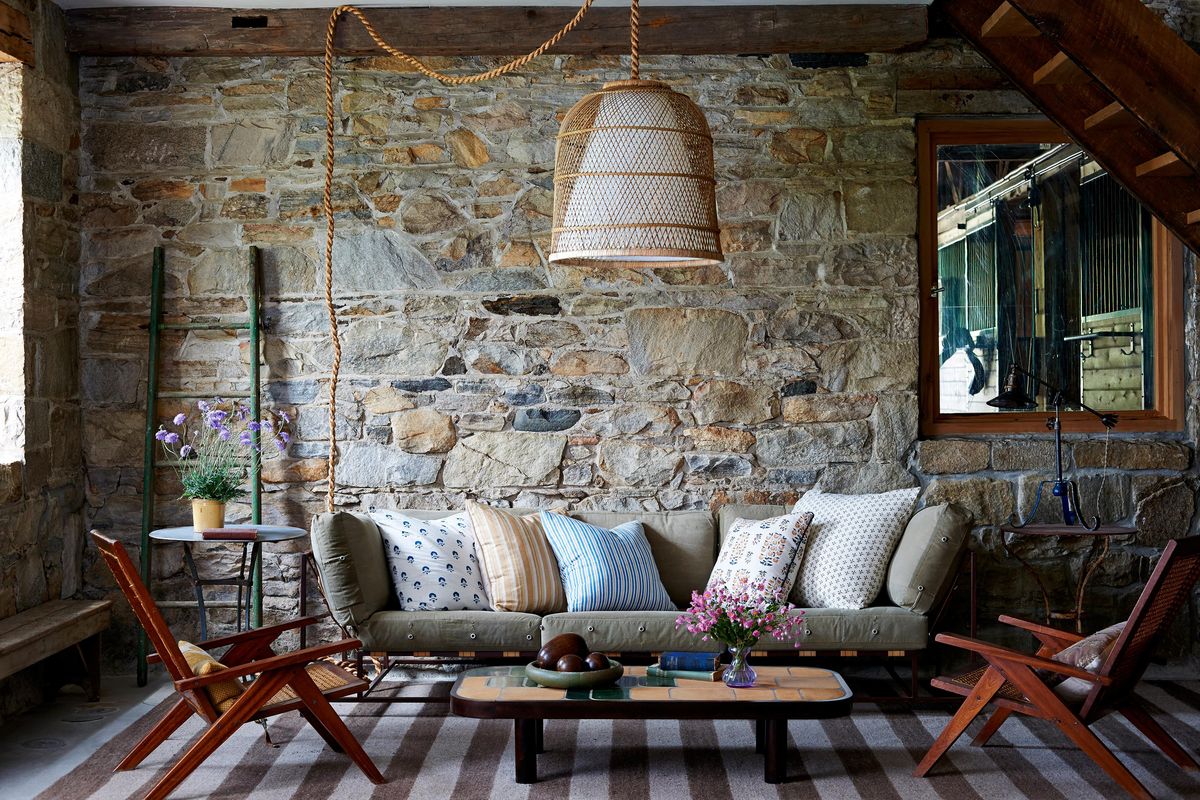Designers share secret tricks for using decorative pillows

A benefit (and hazard) of my job as a design writer is spending chunks of time with decorating experts in beautiful homes. I always learn something from pros who have a refined eye for detail.
Pillows can so easily be changed up for a new look, whether seasonally or just to add some new colors and textures to a room. Walk into any HomeGoods, and you’ll see aisles and aisles of pillows for about $20 that are organized by color and size. Are some better than others?
I decided to dig into this subject with a few designers. Although they usually go with custom pillow designs for clients, they still had plenty of advice about off-the-rack pillow purveyors.
Make your pillows stand out with vintage fabrics
Virginia Tupker says she’s always on the lookout for vintage textiles to make into pillows to mix into the assortments she selects to add texture and pattern to a room. You can look for such fabrics on your travels or eBay.
“To cover a chair or a sofa is a big fabric commitment. But for a pillow, an antique or vintage textile can be a splash of color, and you can change it out for the seasons,” the Connecticut-based designer says. “It adds so much personality and feels eclectic and lived-in, and everything doesn’t just feel brand new. It adds a lot of soul.”
Turkish-corner pillows are a favorite shape for interior designers, she says. She says this technique tucks in the corners so they appear rounded. “It’s an Old World technique coming back,” she says. “This shape feels extremely chic and makes you think of Bunny Mellon and her home in Antigua. It’s very popular with my younger clients now.”
Tupker’s favorite off-the-rack sources: 1stdibs and Les Indiennes.
Pillows should have the same fabric on both sides
Warrenton, Virginia, designer Barry Dixon says there are a lot of reasons pillows should be made of the same fabric on both sides. “I tell clients that if a pillow has a print on one side with a plain backing, it’s like combing the front of your hair and forgetting about the back,” Dixon says. “You’re not finished.” He says you can always see the back of a pillow from a corner or looking over a sofa, and if the back of it’s just white or plain canvas, “Your eye will go to it and notice.”
If both sides are the same, you’ll get twice the wear out of the pillow. “One side doesn’t have to take all the abuse,” Dixon says. “Every time I fluff a sofa, I turn over the cushions and the pillows, as well because it immediately looks plump and fresh. It’s as important as turning a mattress.”
Dixon’s favorite off-the-rack sources: Anichini, Ann Gish, Anthropologie.
Go for the plumpest look possible
Kelley Proxmire loves picking out pillow fabric. Sometimes it’s the first thing she selects for a space, and she doesn’t hesitate to use the most expensive fabric in the room on the pillows. It will help them stand out and have the most impact, she says.
To make them look fuller and plumper, Proxmire says, she stuffs a form 2 inches bigger than the pillow size into the cover. (She would use a 24-inch form for a 22-inch cover.) “It makes them look nice and full,” says Proxmire, whose office is in Bethesda, Maryland. She also recommends hidden zippers for a more polished look.
Proxmire’s favorite off-the-rack sources: Crate & Barrel, Ballard Designs, Wisteria, Frontgate.
Pick a larger size
If you have a keen eye, you can find some great-looking pillows in big-box stores such as Homesense, but don’t buy the smallest pillow on the shelf, designer Erin Paige Pitts says.
“The problem for me with many pre-made pillows is they are too small. I prefer larger pillows – 22 inches square or 24 inches square,” says Pitts, who has offices in Annapolis, Maryland, and Delray Beach, Florida. “Don’t buy 18-inch or 20-inch pillows. They look cheap.”
To keep the filling full and lofty, she suggests a 90/10 or 80/20 mix of feather and down. “I still do the karate chop on my pillows,” she says. “But I don’t like them totally pointy on the ends. Shake them to loosen them up a bit so the points aren’t as sharp.”
Pitts’s favorite off-the-rack sources: Serena & Lily or Restoration Hardware.